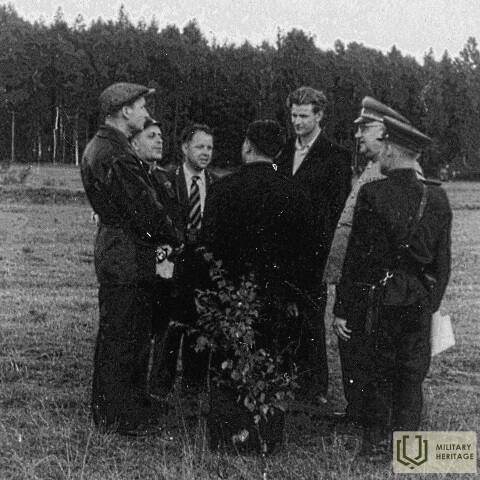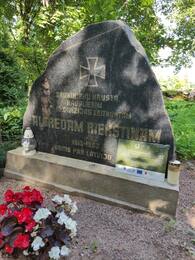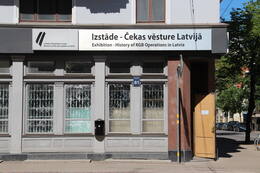SSRS dvigubas agentas – Edvīns Ozoliņš pravarde „Pilotas“

Šaltojo karo žvalgybos ir kontržvalgybos mūšiuose tarp Vakarų ir SSRS dalyvavo abiejų pusių agentai ir dvigubi agentai. Nuo 1920-ųjų sovietų saugumo tarnybos sukūrė visiškai naują režimo apsaugos priemonę: dezinformaciją. Šis terminas Vakaruose anksčiau nebuvo žinomas.
Edvīns Ozoliņš (pravardė „Herberts“, bendravimui su JAV vyriausybinėmis institucijomis – „Herberts Okolo“, kriptonimas CAMUSO/2). Ozoliņš gimė Rygoje 1914 m. Antrojo pasaulinio karo metu jis tarnavo Latvijos aviacijos dalinyje mechaniku. Su šiuo daliniu atsidūrė Vokietijoje. Kapituliacijos metu jam pavyko pabėgti į Švediją. Sunku suprasti, kodėl amerikiečiams patiko Ozoliņš, nes jis buvo visiškai netalentingas ir nenaudingas radijo operatorius. Galbūt amerikiečiams patiko plati amerikietiška Ozolinio šypsena, ir būtent šypsena amerikiečius ir traukė.
Prancūzijos žvalgyba dar 1950 m. vasario 7 d. perspėjo amerikiečius, kad Ozolinis laikomas sovietų agentu, ir pareikalavo visos įmanomos informacijos apie jį. Savo ruožtu CŽV apskaičiavo, kad jie turėjo mažiausiai 75 Ozolinio korteles ir negalėjo nustatyti, apie kuriuos Ozolinius jie kalba. Tačiau prancūzai buvo teisūs.
Lukašēvičo operacinio žaidimo „Meteoras“ santraukoje:
„1951 m. (7V) valstybės saugumo organai sužinojo, kad CŽV rengia šnipų grupę neteisėtam siuntimui į Latviją. Apie tai pranešė Latvijos emigrantas Edvīns Ozoliņš [...], kuris tuo metu gyveno Stokholme ir norėjo grįžti į tėvynę. [sic!]“ [2]
Kaip matyti tiek iš Lukašēvičiaus užrašų, tiek iš KGB aukštajai mokyklai parašyto vadovėlio „Sovietų Sąjungos valstybės saugumo organų istorija“, Ozoliņš buvo užverbuotas pravarde „Pilotas“. Tačiau taip pat žinoma, kad agentas „Pilotas“ tuo metu buvo susijęs su SSRS 1-osios vyriausiosios valdybos (užsienio žvalgybos) rezidencijomis ir niekas Latvijos SSR KGB lygmenyje apie jį neturėjo jokio supratimo.
https://www.lsm.lv/raksts/dzive--stils/vesture/kgb-slepenie-arhivi.-spiegu-speles-latvija-cia-agenti-psrs-dienesta.a261845/
Susijusi laiko juosta
Susijusios vietos
Paroda KGB pastate „KGB operacijų Latvijoje istorija“
Buvęs SSRS Valstybės saugumo komiteto (paprastai vadinamas Čeka) pastatas atviras lankytojams. Čia čekistai kalindavo, tardydavo ir žudydavo Latvijos piliečius, kuriuos okupacinis režimas laikė priešininkais. Taip pat eksponuojama Latvijos okupacijos muziejaus ekspozicija apie Čekos veiklą Latvijoje. Siūlomos ekskursijos po kalėjimo kameras, koridorius, rūsį ir kiemą. Namas pastatytas 1911 m. ir yra vienas gražiausių pastatų Rygoje. Liaudyje vadinamas „Kampiniu namu“, jis buvo baisiausias sovietinio okupacinio režimo simbolis Latvijoje ir vienas iš SSRS valdžios ramsčių. Čeka iš Kampinio namo veikė okupacijos metu nuo 1940 iki 1941 m., o vėliau nuo 1945 iki 1991 m. Dešimtys tūkstančių latvių nukentėjo nuo tiesioginio politinio persekiojimo. Kova su sovietų valdžios priešais tęsėsi ir po Antrojo pasaulinio karo. Čekos požiūris į savo veiklą šiek tiek pasikeitė po Stalino mirties. Fizinį kankinimą pakeitė psichologinis teroras. Dauguma Čekos agentų buvo latviai (52 %). Antra pagal dydį grupė buvo rusai – 23,7 %. 60,3 % agentų nebuvo Komunistų partijos nariai. 26,9 % agentų turėjo aukštąjį išsilavinimą. Sistema buvo sukurta taip, kad įtrauktų vietos gyventojus ir taip turėtų didesnę kontrolę visuomenėje. Personalo dokumentai ir tarnybos įrašai yra Rusijoje. Ši medžiaga nebuvo prieinama Latvijos valdžios institucijoms ir tyrėjams.






